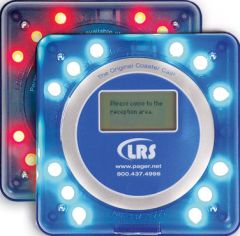Tech
Teaching old tech new tricks
Remember the days before mobile phones made their way into our pockets, when beeping pagers were the toast of the town? 'Twas 15 years ago that I inherited my brother's pager, and I recall rushing to the nearest public telephone every time the little black box goes beep beep beep beep beep.

Remember the days before mobile phones made their way into our pockets, when beeping pagers were the toast of the town?
'Twas 15 years ago that I inherited my brother's pager, and I recall rushing to the nearest public telephone every time the little black box goes beep beep beep beep beep.
Ah, those were the days. We all know, of course, that pagers have since been replaced by mobile phones.
So, imagine my surprise when, during my Vegas trip last week, I chanced upon a food outlet that used radio paging technology in its ordering system.
Rather than make its customers stand around the store waiting aimlessly for their numbers to be called when their food is ready, the food outlet hands out pagers shaped like drink coasters to a customer after he places his order.
With the coaster pager in hand, the customer is then free to move around and browse through other outlets at the food court, or return to his table to wait comfortably whilst his order is being prepared. When it's ready for pickup, the coaster pager will light up and vibrate to alert the customer to return to the store and collect his food.
I thought it was a really cool way to reuse an old piece of technology, and apply it in a new real-world environment to provide better customer service. We really don't get to see much of that kind of innovation anymore these days.
And that's a pity, especially when you have environmental groups like Greenpeace chiding the IT industry for not doing enough to reuse and recycle.
These days, everyone's too quick to chuck their six-month-old mobile phone or two-year-old laptop in favor of the newest and sleekest design in the market.
IT vendors need to spend more effort stretching the lifespan of not just the products they sell, but the technology they develop, and invest more time looking at new ways to reapply these "old" technology.
Maybe they can start by taking another look at self-service kiosks…remember them? Some years back, these standalone machines were the new buzzword, and toasted for their ability to allow users to perform several transactions.
Well, like some other technology that eventually fizzled out after the hype dies down, self-service kiosks came, they saw and they failed to conquer.
Whatever the reason for their failure, I think self-service kiosks still have potential to provide consumers the benefits they were originally intended to offer: easy access to information, reduced transaction and service time, and the ability to perform multiple transactions.
For instance, the casino at The Venetian--where I bunked at during my stay in Vegas--put a new spin to self-service kiosks. Instead of having to handle hundreds of coins when they hit the "collect" button on the slot machine, gamblers are given tickets--issued by the machine--detailing the amount they have collected. The gambler then takes the ticket and inserts it into a self-service kiosk located around the casino. The kiosk reads the barcode on the ticket to retrieve stored data, and immediately dispenses the exact amount owed to the gambler.
It's fuss-free, easy to use and eliminates the need to wait in line at the cashier just to cash in your winnings.
The self-service kiosk also doubles up as ATMs and bill-breaking machines, where you can break a $100-note for smaller bills.
These are just a couple of examples of how old technology can be put to good use, and it only takes that one IT vendor who bothers enough to put some thought into how its technology can be reused and reapplied to current business landscape.
And hopefully, we'll get to see more of such initiatives sprawling up in Asia, too.
 Coaster pagers (Picture source: LRS) |